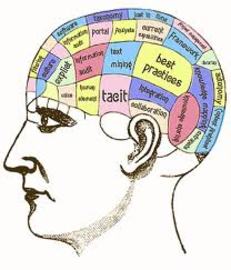Introduction

The businesses today are continually searching for ways to differentiate themselves from their competitors, to sustain their competitive edge. One method for organizations to remain competitive is to develop knowledge management strategy. A knowledge management strategy articulates how the organization creates, values, preserves, and transfers knowledge critical to its operations.
Step 1
While IT systems generate huge volumes of data, the real problem with most of the firms lies in converting this voluminous data into actionable information. Too much data and low reliability are identified as the two foremost problems in decision making. Moreover, information is not often prioritized. Firms with a focus on knowledge management should consolidate information on one hand and provide consistent performance indicators on the other so as to improve upon the quality of decision making in real time.
Step 2
Since knowledge management and business intelligence tools are critical to a firm’s success, firms should scout for tools that enable employees to prioritize and gain insights from the bulk of data. Managers should have access to data that they can interpret and analyze in real time, so that they are able to track their firm's key performances.
Step 3
Knowledge management is all about accessing information about customers, their preferences and their behavior. CRM will be critical to organizational success and is also the area where most IT innovations are likely. Cypress Semiconductor and FleetBoston have made use of Web- based customer management that includes customer satisfaction surveys and feedbacks, and the other customer service initiatives, the key to their company success.
Step 4
Technology is among the critical components of knowledge management. One such technological innovation is transaction processing system. Transactions are events resulting from doing business such as sale, purchase, deposit, refunds etc. Transaction processing systems (TPS) play a vital role in e-business enterprise as they process data resulting from the occurrences of business transactions. Today, we cannot think of electronic commerce without online transactions processing (OLTS) as these real time systems that work instantaneously not only provide superior service to customers and the other trading partners by enhancing value addition to their products and services but provide them an edge over their competitors. One notable example here is Syntellect’s Online Transaction Processing (O’Brien, 167).
Step 5
Technology alone is not sufficient for a powerful knowledge management that companies want to put in place. The corporate culture is as essential, if not more, component of knowledge management. It is important that managers know who knows what and how they use their knowledge and skills in their work. In other words, both latest business intelligence technology and sound corporate culture are parts of good knowledge management. In the past, knowledge-management solutions have ended in failures in several cases primarily because firms have invested heavily in technology at the expense of the needs of the end user.
Conclusion

In conclusion, it is evident that most large organizations access and act upon only a fraction of knowledge available with them. This knowledge could either be hidden in reports, data bases and information systems or may be available with some individual that is lost to the company when the individual quits. The solution to the problem of scattered and hidden knowledge lies in knowledge management. A range of strategies and tools are used as part of an overall knowledge management system to capture the knowledge in various forms within an organization. The knowledge is then delivered to the people who can process and use it to the firm’s advantage.